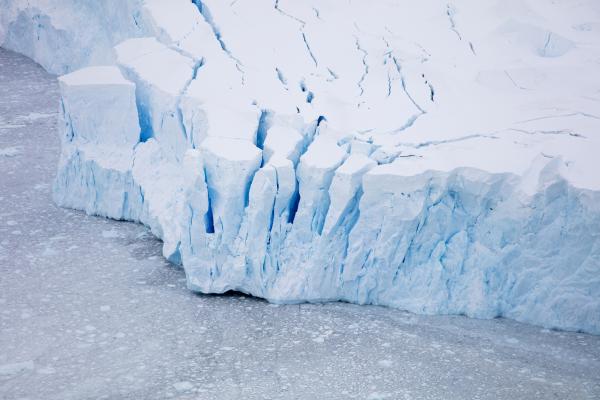Allison Chartrand and Ian Howat find Antarctic ice shelves thinner than previously thought

ORIGINALLY POSTED BY BYRD POLAR AND CLIMATE RESEARCH CENTER AND OSU NEWS
Recent research published in the Journal of Glaciology is the first large-scale study of its kind focusing on the accuracy of estimating the thickness and mass loss of Antarctic ice shelves, which play a critical role in understanding climate change and sea-level rise.
Traditionally, when estimating their thickness and mass loss, scientists have assumed that ice shelves are in hydrostatic equilibrium, a state of balance between gravity and flotation. However, recent research challenges this assumption, particularly in areas with complex features like shear margins and basal channels. These channels are formed when ocean and meltwater buoyant plumes carve troughs upwards into ice-shelf bases, accelerating mass loss.
The study compares measurements of ice shelf thickness obtained from ice-penetrating radar with freeboard height measurements from laser altimetry during multiple airborne surveys. The study focused on 20 of the 300 separate ice shelf systems surrounding about 75% of the Antarctic ice sheet. On average, the study found that Antarctic ice shelves are nearly 6% thinner than previously assumed, which amounts to about 17 meters. While this may seem slightly different, typical ice shelves can vary in thickness from 50 to 600 meters.
This research demonstrates that accurately estimating Antarctic ice shelf thickness and mass loss is complex, and the traditional assumption of hydrostatic equilibrium does not hold uniformly across large-scale ice shelves; more comprehensive and precise measurements of firn (snowpack) and ice thickness are needed to improve our understanding of ice shelf dynamics and predicting sea-level rise, especially near grounding lines and in areas with complex ice features.
The researchers hope their findings will inspire further exploration of older datasets and the development of advanced technologies to better assess changes in Antarctica's dynamic landscape.
The study's lead author was Allison Chartrand, who completed this work as a Ph.D. student at the Byrd Polar and Climate Research Center at The Ohio State University. She is currently a postdoctoral research associate at Goddard Space Flight Center through a cooperative agreement with ESSIC at the University of Maryland. Her co-author was Ian Howat, ENGIE-Axium Professor, Distinguished University Scholar at the School of Earth Sciences, and director of the Byrd Center.
NASA and the National Science Foundation supported this study.
For more information, visit Ohio State News or download the pdf here.
Image credit: Getz Ice Shelf, Nov 10, 2016, by IceBridge, NASA
